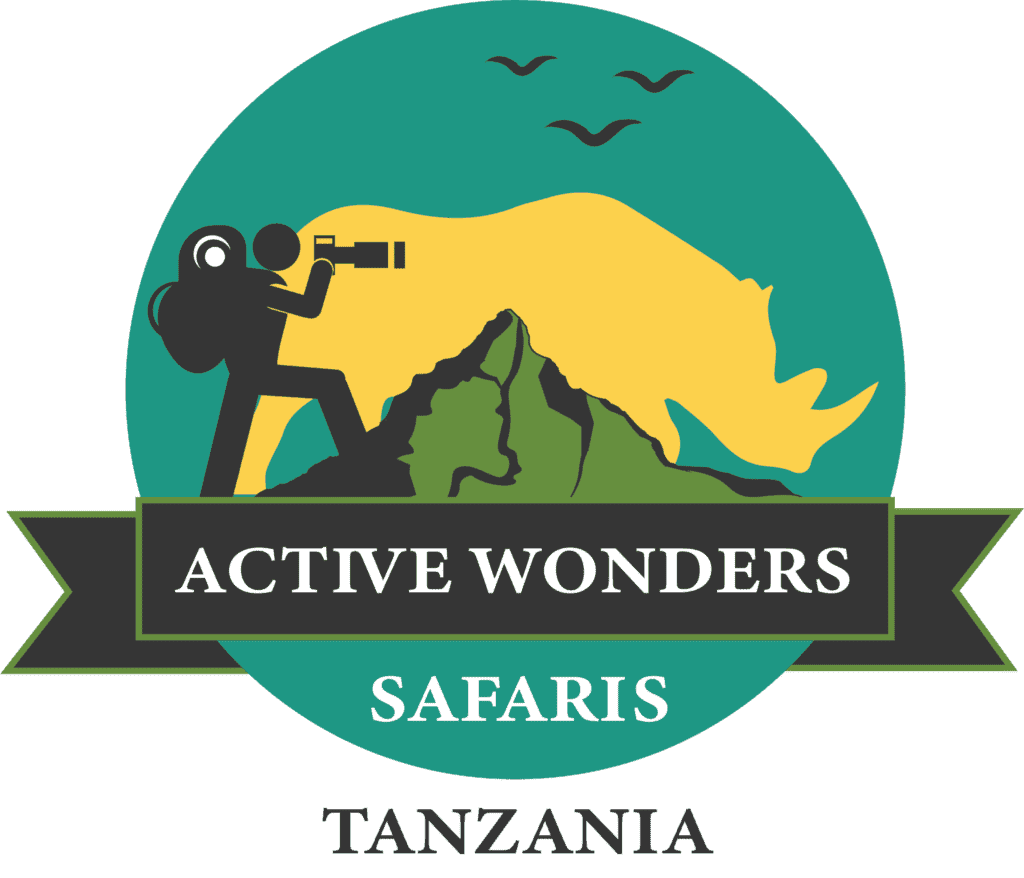national parks in tanzania
National parks in Tanzania are more than 20, which together protect over 20% of Africa’s animal population, Tanzania have a vast diversity of flora and fauna that draws visitors from all over the world on Safaris vacation, study and research programs.
Tanzania is home to more species of wild animals than any other African country, and these creatures are all safely contained within the country’s national parks.
One of the most alluring aspects of any African experience is a wildlife safari, and Tanzania may be the ideal nation for such a trip. You may be sure that there is a safari that is ideal for you because Tanzania national parks are made to fit various kinds of interests, tastes, and comfort levels.
However, on the other hand most important considerations you must make before starting your safari experience is which parks to visit and what the best time to travel there. Although the Serengeti National Park and Ngorongoro crater seem like the most obvious locations to visit, it is also possible that you would enjoy yourself far more in one of the less well-known parks.
best national parks in tanzania
The most visited Tanzania national parks and the most interesting to visit are listed below. In theory, you could see them all if you had the time.
Each well-known and lesser-known national parks in Tanzania is described in detail to assist you in making the best possible vacation plans in Tanzania.
Serengeti National Park
Serengeti national park is located in the northern Tanzania, a seven-hour game drive in transit from Arusha town(the hub of Tanzania’s Northern Circuit tourism), The park covers an area of 14,750 km² and was established in 1951.The number of annual tourists to Serengeti National Park is over 400,000 yearly.
Located in northern Tanzania, the Serengeti is one of the most complex ecosystems on the planet, stretching to the Masai Mara in Kenya to form the mighty Mara-Serengeti ecosystem and it is northwest of the neighboring Ngorongoro Conservation Area . The climate, plants and animals of this region have barely changed over the past one million years, making it also one of the oldest and least disturbed ecosystems on earth.
Ngorongoro Crater
Ngorongoro Crater,is an extinct volcanic caldera in the Eastern (Great) Rift Valley, northern Tanzania. It lies 75 miles (120 km) west of the town of Arusha. The caldera measures between 10 and 12 miles (16 and 19 km) across and has an area of 102 square miles (264 square km).
Its heavily forested rim rises 2,000 feet (610 metres) above the caldera’s floor to an elevation of 7,500 feet (2,286 metres). Ngorongoro is thought to have formed about 2.5 million years ago from a large active volcano whose cone collapsed inward after a major eruption, leaving the present vast, unbroken caldera as its chief remnant.
Tarangire National Park
Tarangire national park is located in the Manyara region of northern Tanzania, less than two hours from Arusha town(the hub of Tanzania’s Northern Circuit tourism), The park covers an area of 2,850 square kilometers and was established in 1970. Tarangire National Park is often a surprising favorite for travelers. Many people either skip Tarangire altogether(unknowingly the beauty of the park), or only visit the park for a quick morning or afternoon game drive, however we recommend staying for at least two days to take full advantage of this fantastic destination.
The park is impressively splendid for its famous concentration of wild animals especially the elephants and it is also one of the finest birding destinations in East Africa.
Lake Manyara National Park
Lake Manyara National Park is located in the region of Manyara in Tanzania. Is located in the Great East African Rift Valley. The area was utilized for sports hunting before a Game Reserve was established in 1957. In 1960 it was designated as a national park and it covers 325 square kilometers. The biggest part of the park is occupied by Lake Manyara it self.
However, it’s well worth a visit in its own right, renowned for its unique ecosystems bursting with diverse wildlife. This pocket-sized version of the Serengeti is host to at least 11 different ecosystems, with groundwater forests, floodplains, hot springs and open savannahs contains five distinct vegetation zones. Wildlife of the area includes buffalo, elephant, lion, leopard, rhinoceros, and many water birds, especially flamingos and more than 300 other migratory birds.
Arusha National Park
Arusha National Park Tanzania covering a land area 552 square Kilometers is located in the Northern part of Tanzania in the north eastern region of Arusha town which is a 40-minute drive from Arusha and approximately 60 km from Kilimanjaro International Airport.
These Park is a meager sized park with a lot of attractions to see and several activities to do. Endowed with varied ecosystems and spectacular views of Mt. Meru, the crater that gives the region its name, diverse wildlife that includes herbivores such as elephants, hippos, buffalo, zebra, and even the occasional wildebeest.
Kilimanjaro National Park
Kilimanjaro National Park is one of Tanzania’s well-known park and is known for being crowned by Mount Kilimanjaro, Africa’s tallest peak.Kilimanjaro National Park is located in Tanzania along the northern border shared with Kenya. It covers an area of 652 square miles (1,688 sq km) which includes the montane forest that surrounds Mount Kilimanjaro.
Kilimanjaro National Park is home to Mount Kilimanjaro which is the tallest mountain in Africa and the tallest free-standing mountain in the world. It reaches a maximum height of 19,341 feet (5,895 m) at Uhuru Peak. Uhuru peak is part of the Kibo cone, which is one of three volcanic cones found on the mountain.
Mkomazi National Park
Mkomazi National Park is a magnificent, 3,245 square kilometre national park in northern Tanzania. Remote and initially inaccessible, it was established in 1951, but never attracted the financial support provided for the better known wildlife strongholds such as the Ngorongoro Conservation Area and the Serengeti National Parks. Only since 1989, when the Tanzanian Government re-examined the reserve’s status and designated it a National Priority Project, has its true significance and importance been recognized.
Mkomazi derives its name from Pare-ethnic language; “Mko and Mazi”. “Mko” means a traditional tiny wooden spoon used by the Pare people for eating and “Mazi” means water. This implies that the water in the Park is hardly enough to fill up the wooden spoon.
Ruaha National Park
Ruaha National Park is an untouched ecosystem famous for rare game viewing and fascinating landscapes. These national park, found in west of Iringa town in south-central Tanzania. These park is located at an elevation of 2,500 to 5,200 feet (750 to 1,900 m) and covers an area of 5,000 square miles (12,950 square km) and was originally part of the Rungwa Game Reserve.
Lying in the Eastern (Great) Rift Valley, the Ruaha national park, established in 1964, consists mostly of rolling plains east of the Great Ruaha River where it gate the name from. Vegetation consists of clumps of palms and patches of open grassland; in the north there are scattered baobab trees and scrubby woodland. Wildlife includes lion, leopard, cheetah, elephant, zebra, kudu, bushbuck, buffalo, roan and sable antelope, and hartebeest. Crocodiles and hippopotamuses are found in the rivers.
Nyerere National Park(Selous)
Nyerere National Park is the name given to Selous game reserve, it was huge game reserve, southeastern Tanzania. It is named after Frederick Selous, a naturalist, explorer, and soldier.
Nyerere national park is the Africa’s Largest National Park! The Park with staggering size of 30,893km2 host one of the world’s largest concentration of wildlife. The collection of wildlife both in diversity and abundance is just remarkable! Visitors to this vast sanctuary will be able to see astounding volume of wildlife both rare and common species.
Mikumi National Park
Nyerere National Park is the name given to Selous game reserve, it was huge game reserve, southeastern Tanzania. It is named after Frederick Selous, a naturalist, explorer, and soldier.
Nyerere national park is the Africa’s Largest National Park! The Park with staggering size of 30,893km2 host one of the world’s largest concentration of wildlife. The collection of wildlife both in diversity and abundance is just remarkable! Visitors to this vast sanctuary will be able to see astounding volume of wildlife both rare and common species.
Gombe National Park
Gombe National Park, 52 sq km (20 sq miles), Tanzania’s smallest national park. Located on the western border of Tanzania and the Congo, is most famous for Jane Goodall, the resident primatologist who spent many years in its forests studying the behavior of the endangered chimpanzees.
There are truly wild places in Tanzania, Gombe National Park is one of them. The nature value of Gombe was noticed in 1943 when it was designated as a game reserve. Gombe gained its popularity after the pioneering research activities of Dr Jane Goodall in 1960 which is believed to be the longest running study of primates in the world.
Kitulo National Park
Kitulo National Park is is home to over 400 varieties of species that includes 45 varieties of terrestrial orchid – forming a wildflower display during the rainy season. There are two popular mountains Poroto and Livingstone Mountains that cover an area of 412.9km2 and its well-watered volcanic soils support the largest montane grassland In Tanzania.
Nicknamed, Serengeti of Flowers, Kitulo National Park is the first National Park in the tropical Africa to be established primarily for its floristic importance.


